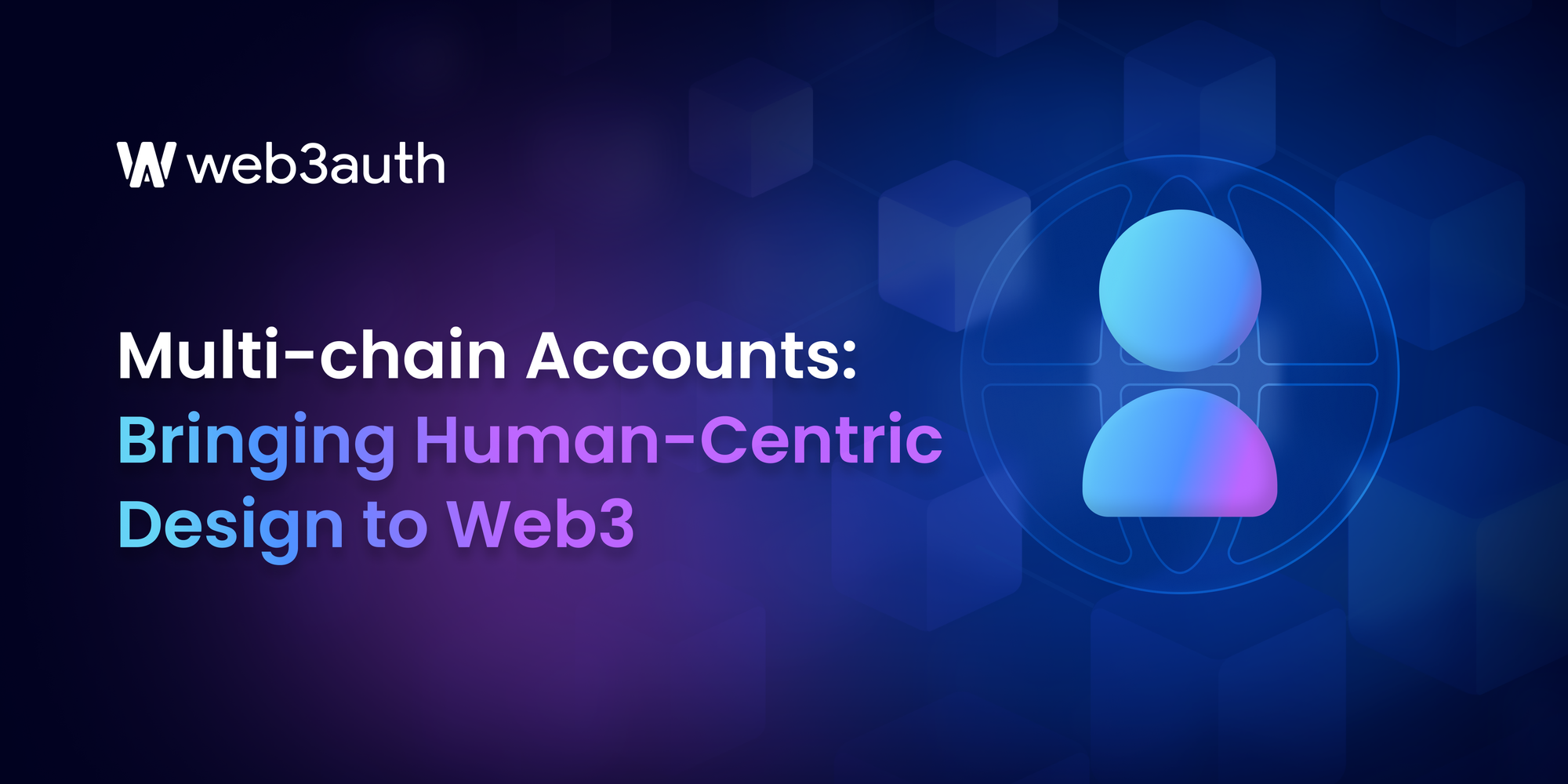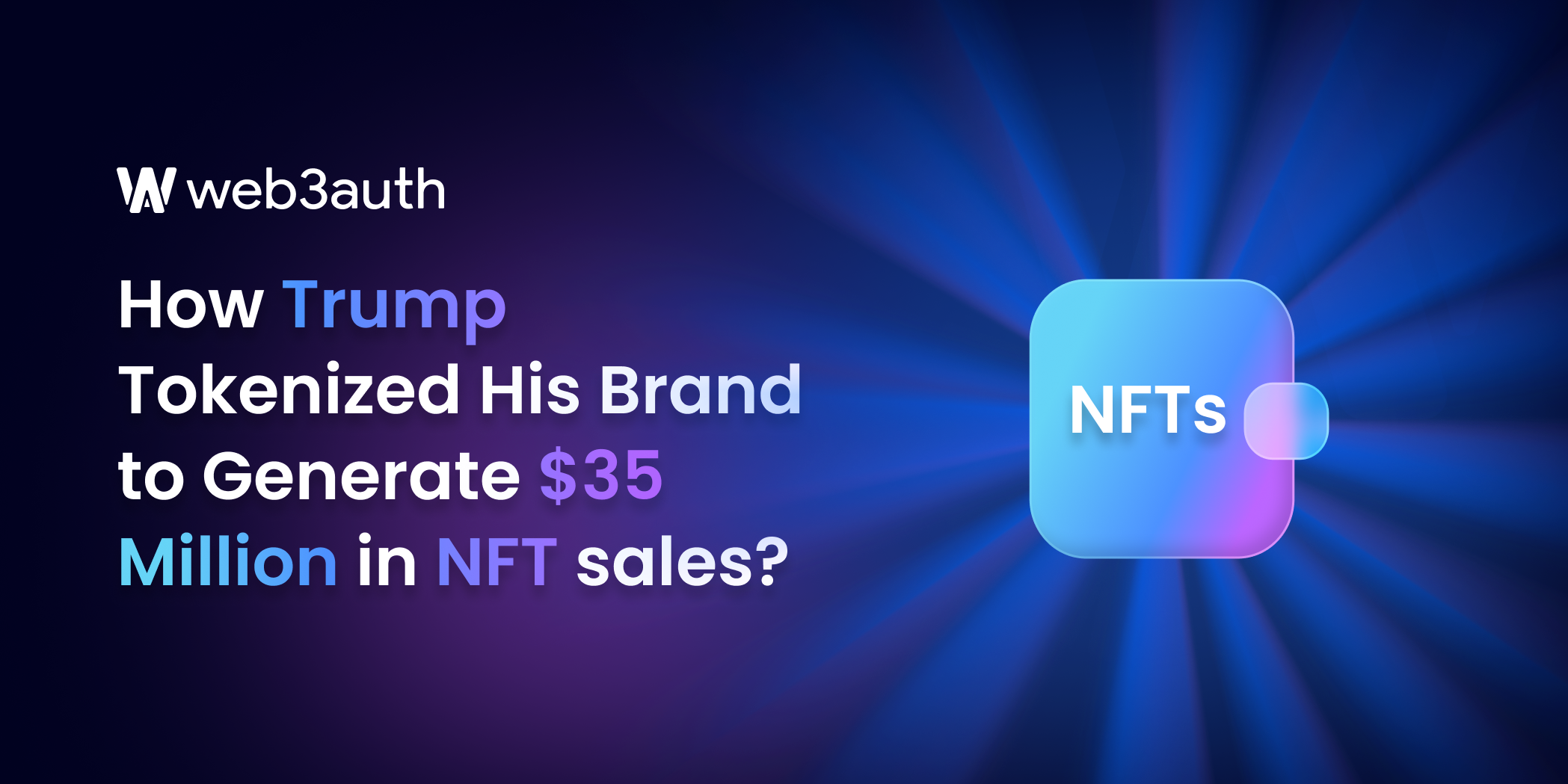On this page
Ask any Web3 user what the biggest issues in the space are and you might find the answer to be unilaterally, the fragmented experience. Aside from the usual issues of each chain operating in isolation and the juggling act of wallets, addresses, and tokens, one factor seems to have been overlooked.
In our haste to make Web3 the new frontier, we seem to have left the philosophy of human-centric design behind. Ironic, considering the fact that the whole point was to bring people to a more open, decentralized, and user-controlled internet, where individuals have true ownership and control over their data and assets. But fret not, because Multi-chain Wallets are bringing the human-centric design to the center stage.
What Is Human-Centric Design in Web3?
Human-centric design is an approach that puts users’ needs, experiences, and capabilities at the heart of product development. It’s about creating technology that adapts to people, rather than forcing people to adapt to technology. In traditional tech, human-centric design has led to intuitive interfaces, simplified experiences, and a focus on accessibility for all users.
In the Web3 space, this design philosophy is still emerging, but it is vital. Web3 tools and applications are built on sophisticated technology, but for them to be truly transformative, they must be usable and welcoming to everyone. Human-centric design in Web3 means building systems that are easy to navigate, intuitive, and respectful of user autonomy and control. It’s a shift from a tech-first to a user-first mentality, creating a Web3 that feels accessible to people of all backgrounds.
Does Web3 Need a Human-Centric Approach?
Good UX/UI is like road signs for Web3 - helping users find their way.
— Robert Licau (@RobertLicau) November 11, 2024
Web3 startup owners often feel frustrated when users struggle with complex tools. UX/UI design solves this by making tools easy and inviting, like adding clear signs on a busy road. It guides users smoothly,…
While blockchain offers powerful tools for decentralization, the technical complexity remains a significant barrier. Web3 applications are often built with a tech-first mindset, prioritizing protocol and security but at the expense of user experience. Users need to understand wallet setup, private key management, gas fees, and network switching. The fragmented structure of multi-chain interactions also creates a disjointed experience that can drive users away.
According to a report by Finder.com, only 14% of Americans hold cryptocurrency, with a significant number of non-users citing difficulty understanding the technology as a deterrent.
Most users expect seamless interactions, yet Web3 often requires them to navigate between different chains, wallets, and tokens to access various applications. This fragmented structure stands in contrast to the cohesive, user-friendly experiences people are used to in Web2, where one login can grant access to an entire ecosystem.
Erasmus Hagen, director of product at Concordium, states “... this has been an issue with the Web3 space for some time, where the features and services have simply been inaccessible for the vast majority of potential users due to the complexity of the space.”
Account recovery is also a major concern. In Web2, getting your account back is typically as easy as requesting a password reset, but in Web3, losing access to a wallet or private key often means irretrievable loss of funds. This lack of user-friendly security and recovery measures creates anxiety and increases the risk of permanent loss, making Web3 feel less safe for average users.
An Investopedia report states that 20% of Bitcoin—worth billions of dollars—exists in "lost wallets." In another survey by Pew Research (2024), 63% of users cited concerns over losing access to their crypto as a reason for hesitating to enter the market.
All of this added together creates a steep learning curve, and a complexity that is a major obstacle to Web3’s goal of mainstream adoption.
How Multichain Wallets Embody Human-Centric Design
Multichain Wallets are a prime example of human-centric design in Web3. By focusing on how people interact with blockchain, they strip away unnecessary complexities, making the technology feel familiar and empowering. Here are some of the key ways Multichain Wallets embody this approach:
Simplified Access and Navigation
Do you know what Chain Abstraction (ChA) is?
— Ryan Yoon | TigerResearch (@ryanyoon_eth) October 9, 2024
🦁I've heard about it a lot in this industry, but it's hard to understand. Let's start with the definition with @ParticleNtwrk and @TABASCOweb3 .
✅ Chain abstraction aims to shield users from the complexities of interacting with… pic.twitter.com/LC6jmdtIUu
Traditional blockchain experiences often require users to manage multiple wallets, navigate complex interfaces, and understand the technical aspects of each network. With Multichain Wallets, users can access multiple chains from a single account, just as they would with a social media login across platforms. This minimizes the learning curve, making it easy for newcomers to explore and interact with blockchain without a technical background.
Single-Identity Experience
Multichain Wallets provide a single, cohesive identity across all blockchain interactions. Rather than juggling multiple wallets and addresses, users maintain one account identity that works across applications and networks. This unified identity makes Web3 interactions feel consistent and reliable and allows them to build a recognizable, cross-platform presence within Web3, which is essential for establishing trust and continuity.
For example, logging using familiar credentials (e.g., their Google or Twitter account) to access a range of decentralized applications (dApps) on different blockchains.
User-Friendly Security and Recovery Options
Traditional wallets place the burden of security entirely on users, relying on private keys that are difficult to recover if lost. Multichain Wallets introduce human-friendly security measures like social recovery, multi-signature verification, and time-based authentication, giving users flexible, accessible options for managing their accounts.
This approach offers peace of mind, as users don’t need to worry about losing access due to a lost key. They can configure their accounts with security measures that feel accessible and appropriate to their needs, which empowers more users to engage confidently in Web3.
Gas and Transaction Fee Abstraction
One of the most common challenges for Web3 users is managing transaction fees in various tokens across networks. Multichain Wallets enable gas fee abstraction, allowing users to pay fees in their preferred token or with the help of sponsored transactions. Users no longer need to hold native tokens on every chain to complete transactions, making it far easier and more cost-effective to interact with dApps. This reduces friction and makes Web3 feel as seamless as traditional apps.
Adaptable and Inclusive Onboarding
Multichain Wallets enable multiple sign-in options, such as social logins and email authentication. This creates a familiar entry point for users accustomed to Web2 experiences and reduces the intimidation often associated with blockchain technology. A familiar onboarding experience makes it easy for users to enter Web3 without needing extensive technical knowledge, removing barriers for a diverse range of users and encouraging mass adoption.
The Power of Human-Centric Design
Web3 and blockchain technology offer an inspiring vision for a more open, decentralized, and user-driven internet. By enabling true ownership of digital assets, data privacy, and financial inclusion, Web3 aims to transform the way we interact online. However, for Web3 to truly reach its potential, it must be accessible and intuitive—inviting everyone, not just tech enthusiasts, to explore and engage.
If you’re interested in exploring the user-centric future of Web3, check out our documentation and demo and discover how we can help make your Web3 experience seamless, secure, and truly accessible.





